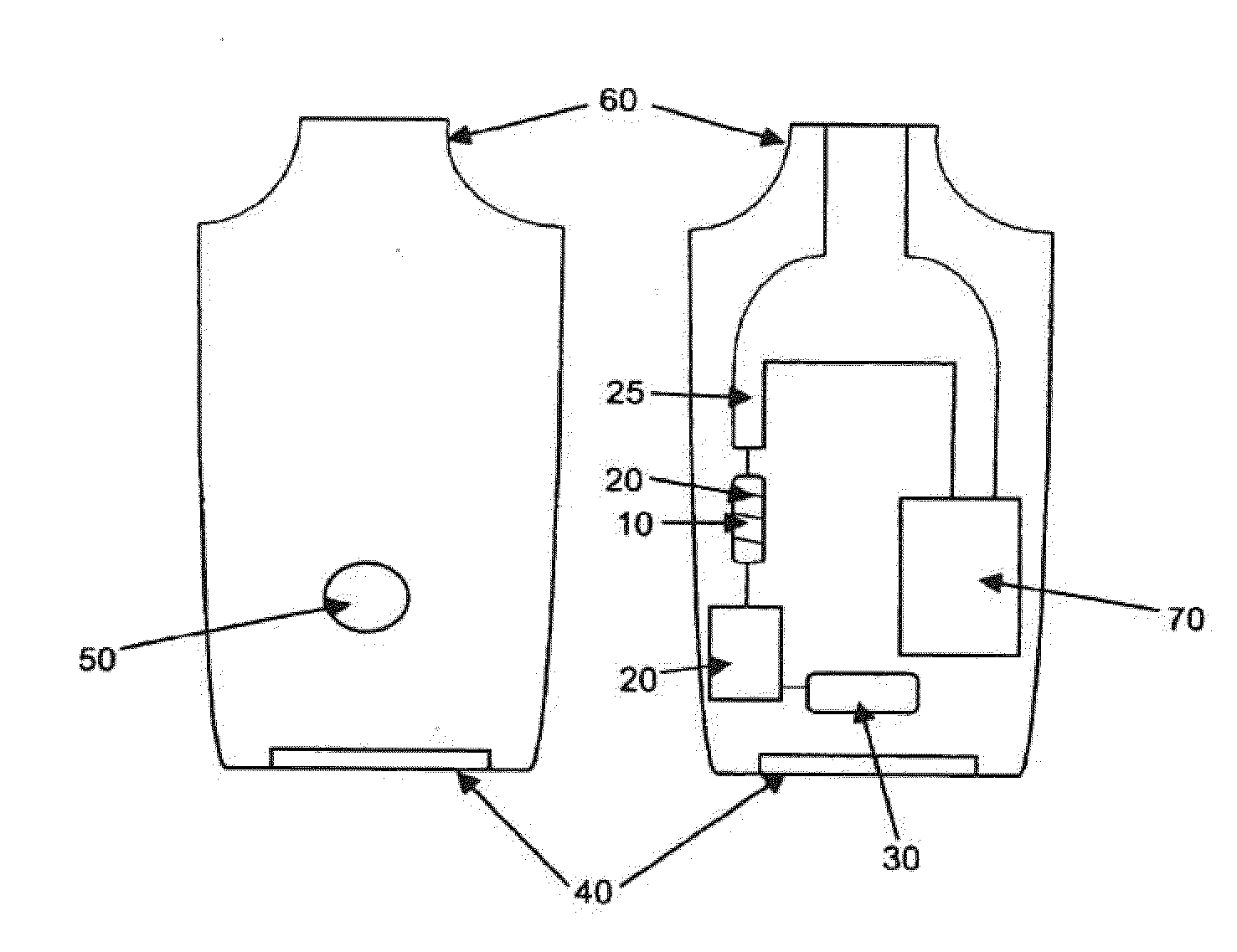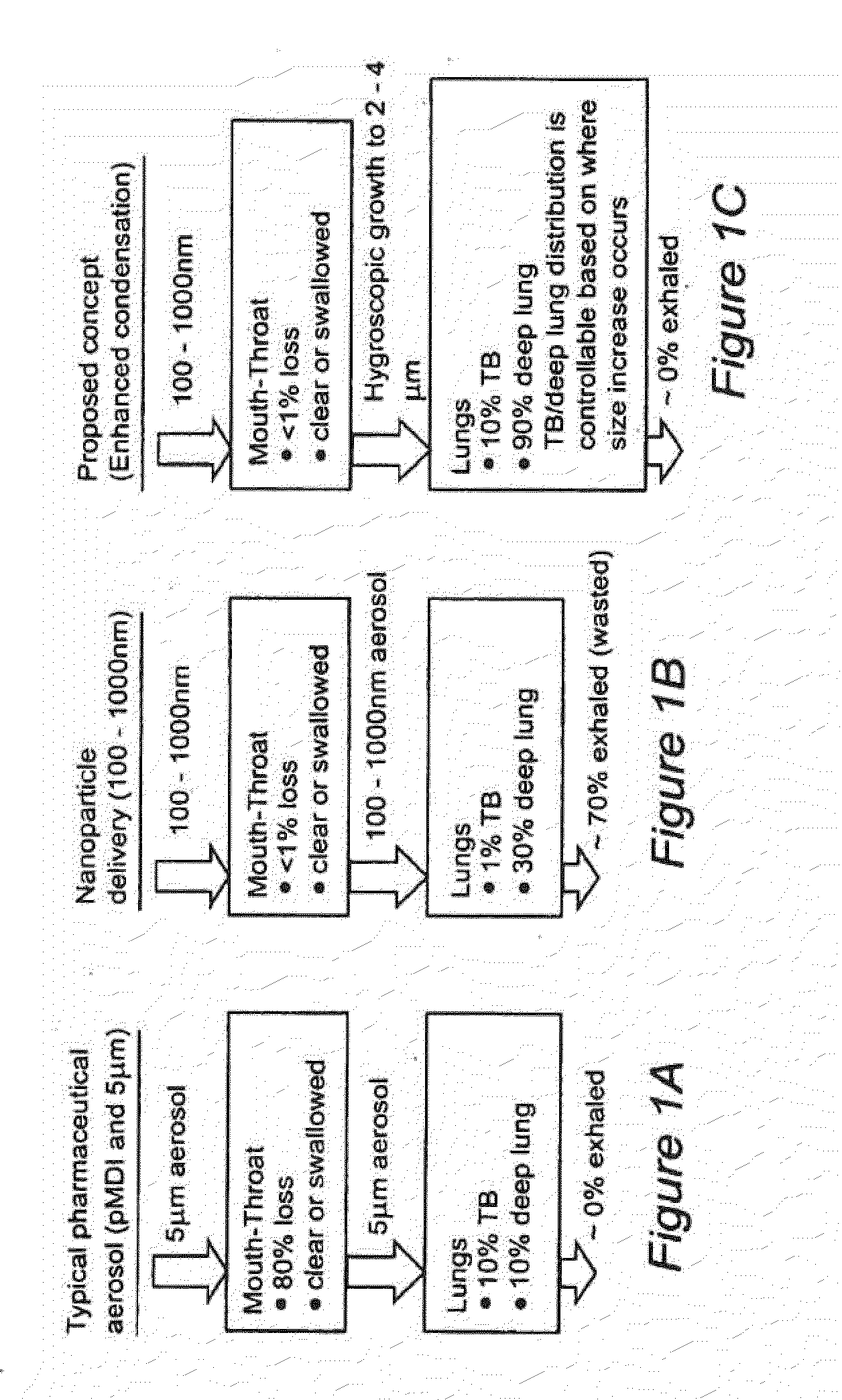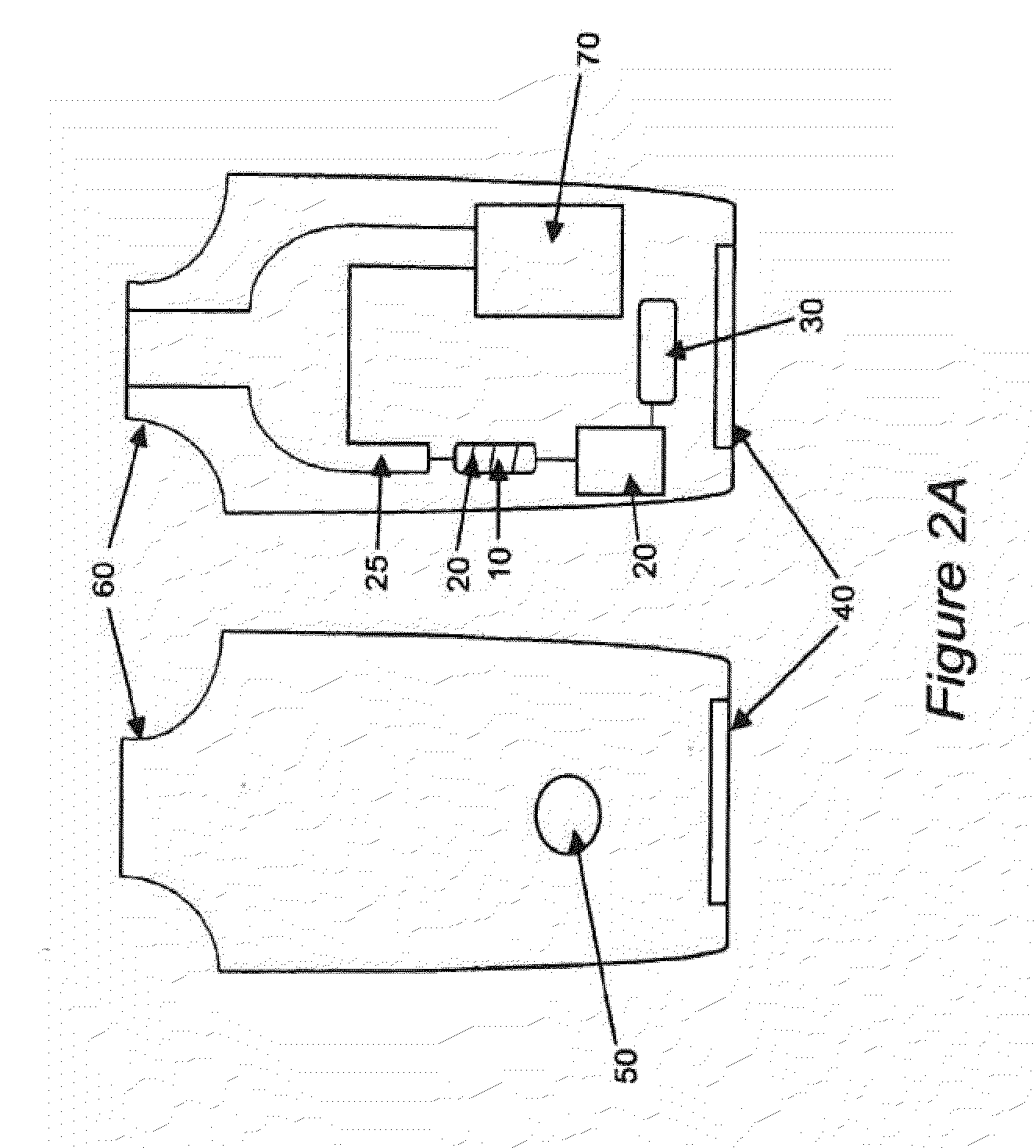Effective delivery of nanoparticles and micrometer-sized pharmaceutical aerosols to the lung through enhanced condensational growth
a nanoparticle and micrometer aerosol technology, applied in aerosol delivery, combustion types, lighting and heating apparatuses, etc., can solve the problems of increased side effects, increased cost, and high percentage of nanoparticle and submicrometer aerosols not retained in the lungs, and achieve the effect of reducing inter- and intra-subject variability
- Summary
- Abstract
- Description
- Claims
- Application Information
AI Technical Summary
Benefits of technology
Problems solved by technology
Method used
Image
Examples
example 1
[0060]To illustrate the proposed concept, an initial computational fluid dynamics (CFD) study was performed. The respiratory geometry considered was a realistic representation of the mouth-throat region (Xi and Longest, 2007) attached to a tracheobronchial model extending to respiratory generation G6 (FIG. 3). In this model, the trachea is considered to be the first respiratory generation (G1) and each downstream branch is considered a subsequent generation (i.e., G1-G6). To evaluate the effect of the relative humidity field on particle growth and deposition, four inhalation conditions were evaluated (Table 1).
TABLE 1Inhaled relative humidity and temperatureconditions at the mouth inletInhaled relative humidityInhaled temperature (T)Case(RH) at the mouth (%)at the mouth (° C.)1302326027310040410047
[0061]A standard medical aerosol inhalation rate of 30 L / minute was assumed and the initial particle diameter at the mouth inlet was 200 nm. The particles had no initial spray inertia. For...
example 2
Relative Humidity in the Upper Airways
[0063]To evaluate the effects of condensationAL growth on hygroscopic albuterol sulfate aerosols, realistic models of the mouth-throat (MT) and upper tracheobronchial (TB) regions were constructed based on the dimensions of an average adult male. The realistic MT geometry used in the upper airway model was originally developed by Xi and Longest (2007). This geometry was based on a dental impression cast of the mouth reported by Cheng et al. (1997) joined with a medical image-based model of the pharynx and larynx. The TB geometry used in this study was developed from a cast model of a middle aged adult male (Cohen et al., 1990). The MT and TB geometries were then smoothly connected in the region of the upper trachea (FIG. 3).
[0064]The objective of this case study was to evaluate the effects of inhaling subsaturated cool (body) and saturated warm (>Tbody) air on the heat and mass transport within the upper respiratory tract. The airway surfaces we...
example 3
Condensation Growth of Single Droplets
[0067]A number of previous studies have considered the hygroscopic growth of respiratory aerosols at RH values of 100% and below. However, these studies have not addressed several questions relevant to the growth of aerosols in supersaturated respiratory environments. For example, only Ferron (1984) has briefly addressed the growth of respiratory aerosols under supersaturated conditions. Other issues include the accuracy of Raoult's law for supersaturated growth and the relevant time scales of condensation. To address these issues, a case study was conducted that considered the condensation growth of individual hygroscopic NaCl and albuterol sulfate (AS) particles and droplets. The governing equations were based on previous evaporation and condensation models for salts (Ferron, 1988), soluble and insoluble aerosols (Robinson, 1998), and multicomponent droplets (Longest, 2005). Solution of the governing equations was performed using an adaptive f...
PUM
| Property | Measurement | Unit |
|---|---|---|
| diameter | aaaaa | aaaaa |
| diameter | aaaaa | aaaaa |
| diameter | aaaaa | aaaaa |
Abstract
Description
Claims
Application Information
 Login to View More
Login to View More - R&D
- Intellectual Property
- Life Sciences
- Materials
- Tech Scout
- Unparalleled Data Quality
- Higher Quality Content
- 60% Fewer Hallucinations
Browse by: Latest US Patents, China's latest patents, Technical Efficacy Thesaurus, Application Domain, Technology Topic, Popular Technical Reports.
© 2025 PatSnap. All rights reserved.Legal|Privacy policy|Modern Slavery Act Transparency Statement|Sitemap|About US| Contact US: help@patsnap.com



